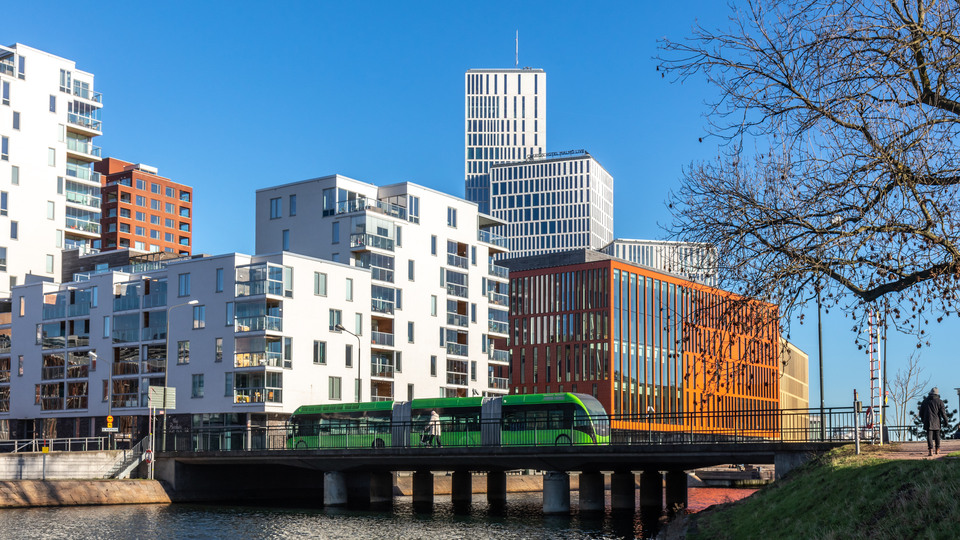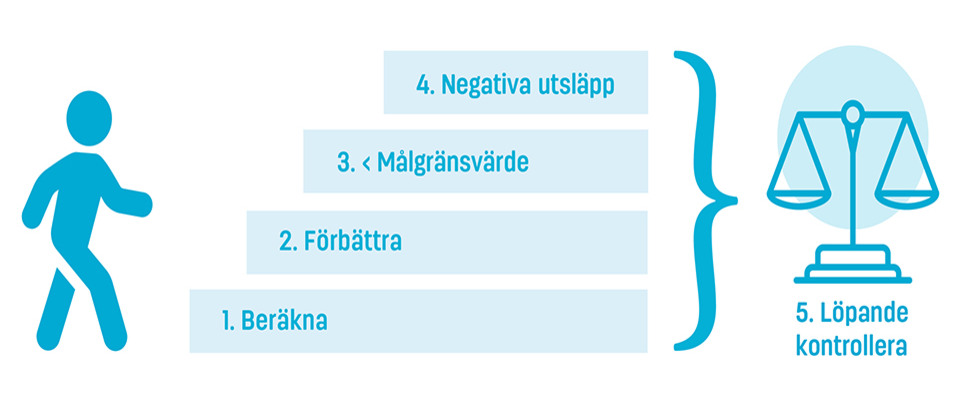
New method will help the construction industry to achieve climate neutrality
A method that IVL Swedish Environmental Research Institute has developed together with the industry initiative LFM30 in Malmö will help the construction industry to achieve climate neutrality. LFMH currently has 160 players connected from the entire construction chain, of which 38 are developers. All undertake to take concrete measures to sharply reduce greenhouse gas emissions.
– The method for achieving climate neutrality is based on drawing up a climate budget and goes significantly further than the proposed law on climate declaration for new buildings, which will take effect from January 2022. It also goes further than various environmental certification systems of buildings, says Martin Erlandsson, life cycle expert at IVL who, together with Andreas Holmgren, head of sustainability at the construction company Otto Magnusson, has developed the method.
To ensure that it is built with the best technology, target limit values (maximum climate impact per square meter of building) have been developed for new production of single-family houses, apartment buildings and premises. Corresponding work is also underway for renovation, conversion and extension work on existing buildings and facilities.
The calculations are based on the same climate database that IVL has established for the National Board of Housing, Building and Planning and which will be used for the forthcoming Climate Declaration Act. The difference is that LFM30 will use representative climate data from this database, which is required for them to be able to form the basis for LFM30's target limit values. The National Board of Housing, Building and Planning has proposed that limit values be introduced in 2027 at the earliest and will then also need to switch to representative climate data for building materials, instead of conservatives as have now been proposed. The climate calculation in LFM30 contains all parts of a building so that all parts can be improved, in contrast to the statutory climate declaration which only includes the heaviest materials.
– LFM30 shows that the construction industry can increase the pace of climate change so that it is already possible to achieve both national and international climate goals. Our model is easy to use and does not entail unnecessary additional costs. We hope that our work can inspire industry players in other regions and help them along the way, says Andreas Holmgren.
To calculate how much climate impact different buildings have and how emissions can be reduced through changed material choices and production methods, you can use the Construction Sector's environmental calculation tool (BM) Opens in new window., which is a tool that IVL has developed.
Opens in new window., which is a tool that IVL has developed.
– For the market to be able to make cost-effective climate calculations, it is not enough that there is only one general database. There must also be a calculation tool like BM that everyone can afford to use. BM can be used as a hand calculation tool or for those who have large calculations with a digital import from BIM or construction cost software, says Martin Erlandsson.
On this website External link, opens in new window. you can read more about the initiative and also hear interviews with, among others, Martin Erlandsson who tells more about the method for climate budget.
External link, opens in new window. you can read more about the initiative and also hear interviews with, among others, Martin Erlandsson who tells more about the method for climate budget.
For more information, please contact:
Martin Erlandsson, martin.erlandsson@ivl.se, +46 (0)10-788 65 30
Andreas Holmgren, andreas.holmgren@ottobygg.se, +46 (0)70‑458 83 60
LFM30 is an industry-driven initiative in Malmö in which IVL participates. The aim is to create a geographical game plan that accelerates the construction sector's climate change and implementation of Agenda 2030. The initiative is actor-driven and supported by Byggföretagen, Fossilfritt Sverige, Information Center for Sustainable Construction and Malmö city.

LFM30's method for climate budget
Step 1 is to make a climate calculation for the construction and use phase. An action plan is then drawn up with climate improvement measures (step 2) required to achieve established target limit values (maximum greenhouse gas emissions - step 3). Only when the target limit value has been reached can you move on to step 4, which consists of repayment through negative emissions. During the entire life of the building, ongoing checks are made to balance and report changes (step 5).
